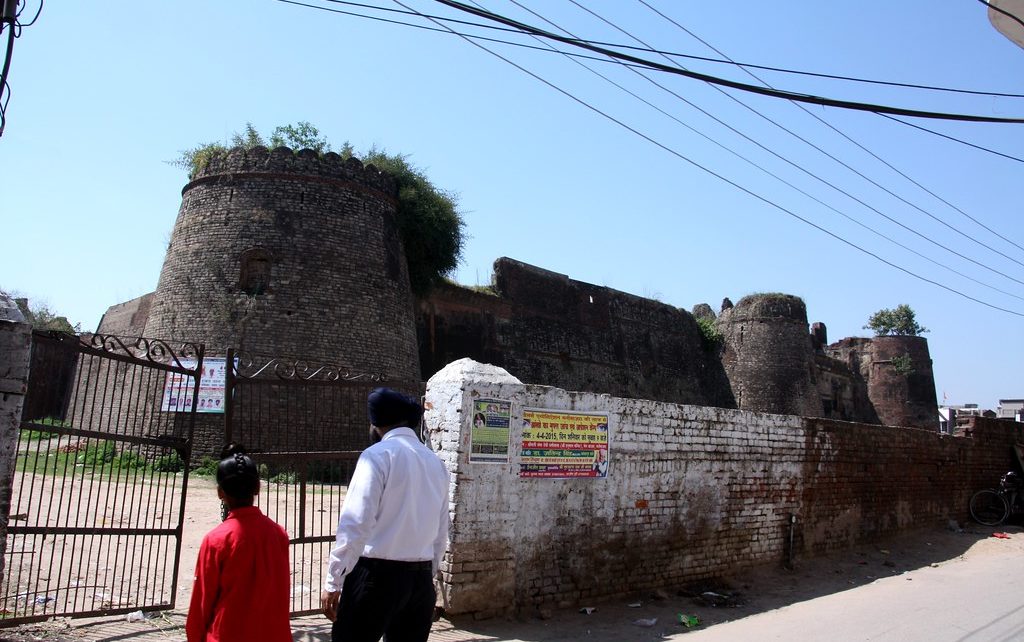Chandigarh
Chandigarh, which is known as one of the best experiments in urban planning and modern architecture in the twentieth century in India, came into existence in 1966. For more than a half century, Chandigarh, which is divided into various sectors, has lived without “Sector 13”.
However, the number 13, which is considered unlucky in European culture, may soon be seen prominently on Chandigarh’s map with the UT Administration giving a go ahead to rename Manimajra as “Sector 13”.
The move has attracted mixed reactions from the city residents with many opposing it and expressing apprehensions that rechristening of Manimajra will harm its historical importance. Not only this, the issue has also reached the local Court.
Commenting on UT Administration’s decision, former Chandigarh chief architect Sumit Kaur says, “While renaming any place in Chandigarh, we should consider that the fact that a sequence has been followed by the city planners to number the sectors in the city. Sector 12 is on one corner while Manimajra, which will be renamed as Sector 13, is on another side of the city. This would look wrong… ”
“Also, Manimajra holds historical significance and decisions related to renaming of any place here should be taken only after taking into consideration the facts related to the city’s planning,” she adds.
Notably, the Resident Welfare Associations in various places of Chandigarh have been demanding renaming of their respective areas for a long time. It was during last year when the Resident Welfare Association Modern Housing Complex, Chandigarh demanded that the Complex and adjoining areas be granted the status of Sector 13.
Accordingly, the Administration had chalked out a proposal to rename eight areas including Manimajra and Modern Housing Complex as Sector 13. Punjab Governor and UT Administrator VP Singh Badnore had approved the proposal last week, while a notification in this regard is yet to be issued.
It is said that when Swiss-born French architect Le Corbusier was designing Chandigarh, he never included Sector 13 in the layout of the city. While many believe that number 13 is considered unlucky in France and this superstition led to the omission of Sector 13 from Chandigarh city, the official documents tell a different story.
The city development plan states, “The sectors of the city are numbered commencing from the northern most edge of the city with the highest numbers located at the southern edge. There is no Sector 13 in Chandigarh, but the addition or subtraction of the number of any two consecutive Sectors in Phase I sectors vertically amounts to 13 or its multiple (e.g. Sec. 2 + Sec. 11 = 13, Sec.11 + Sec. 15=26, etc.).”
“Though it is generally believed that number 13 was left out due to superstition but records indicate that Sector 12 and 13 were demarcated initially as a cultural zone in the lower halves of Sector 10 and 11 but later removed to avoid confusion. However, later number 12 was assigned to residential area at the edge of Sector 11 but number 13 was left out in absence of an appropriate area for its location,” the plan further says.
Architect SD Sharma, who has worked with Le Corbusier told The Pioneer, “The city planners decided against adding Sector 13 to Chandigarh as they followed their European belief which holds the number 13 inauspicious. However, in India, we celebrate festivals like Lohri and Baisakhi on the 13th of the respective months.”
“As far as the issue of rechristening Manimjra as Sector 13 is concerned, many inhabitants are opposed to the idea. While it would not be wrong to overcome the stigma of number 13 and have Sector 13 in Chandigarh, the authorities should do it after taking suggestions from all sides,” he says.
Interestingly, the city’s creator Le Corbusier’s original plan was divided into a gird of 30 sectors with Capitol Complex as well as Civic Centre as its focal points. And, phase II layout included Sector 31 to 47.
Under Chandigarh Master Plan 2031, the reference area for planning constitutes 144 sq km which includes 60 sectors in the sectoral grid as well as the periphery areas outside it.
Colonel Gursewak Singh, President Resident Welfare Association, Modern Housing Complex (MHC), Chandigarh says, “Last year, we had demanded that MHC and its adjoining areas should be renamed as Sector 13, to introduce Chandigarh’s missing sector. But, the Administration decided to rename entire Manimajra as Sector 13.”
“We welcome this decision and are not opposed to the renaming of Manimajra and MHC,” he adds.
On the other hand, advocate Ravinder Singh Bassi, who has filed a petition in District Court challenging the decision, says that the rechristening of Manimajra will harm its historical significance.
The Administration is ignoring the facts and sentiments of local people. The original inhabitants are not happy with the decision of renaming of Manimajra and few people who migrated here from other places are in favor of this, he further says.
The petition filed in the Court states, “Manimajra is a small historical town situated in the foothill of the Shivalik range, established 600 years ago by its then ruler named Garib Dass and Manimajra has witnessed many historical events. It also has a social and religious importance as the ‘Sidh Peeth’ of Mansa Devi temple is situated in the periphery of Manimajra.”
“Manimajra has a 500 to 600 years old historical fort, Thakurdwara. Gurudwara Khooni Sahib in Manimajra holds historical importance as Guru Gobind Singh had visited the place. But, ignoring all the said facts and also, ignoring the sentiments of local people, Administration has decided to rename the place,” the petition adds.




